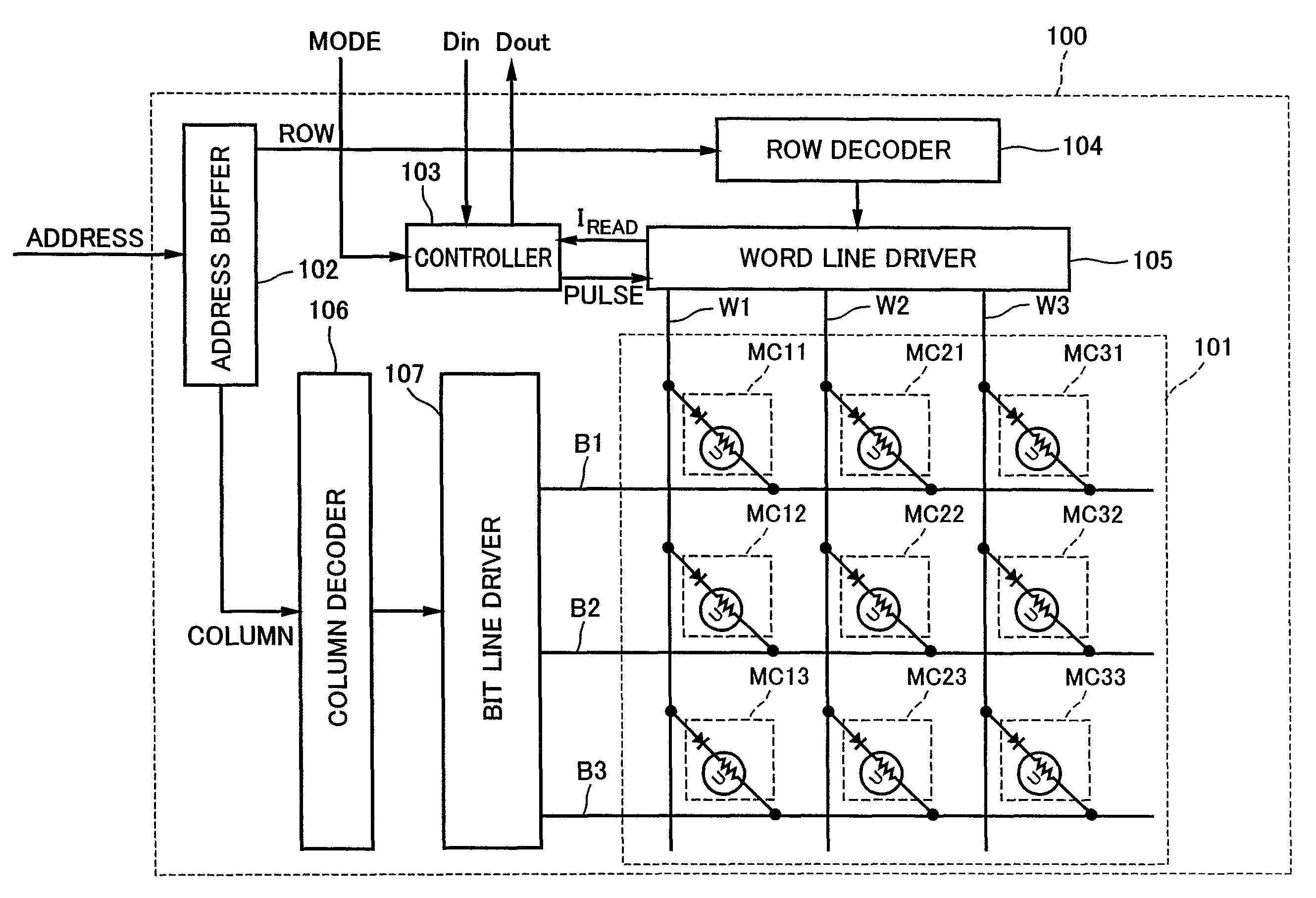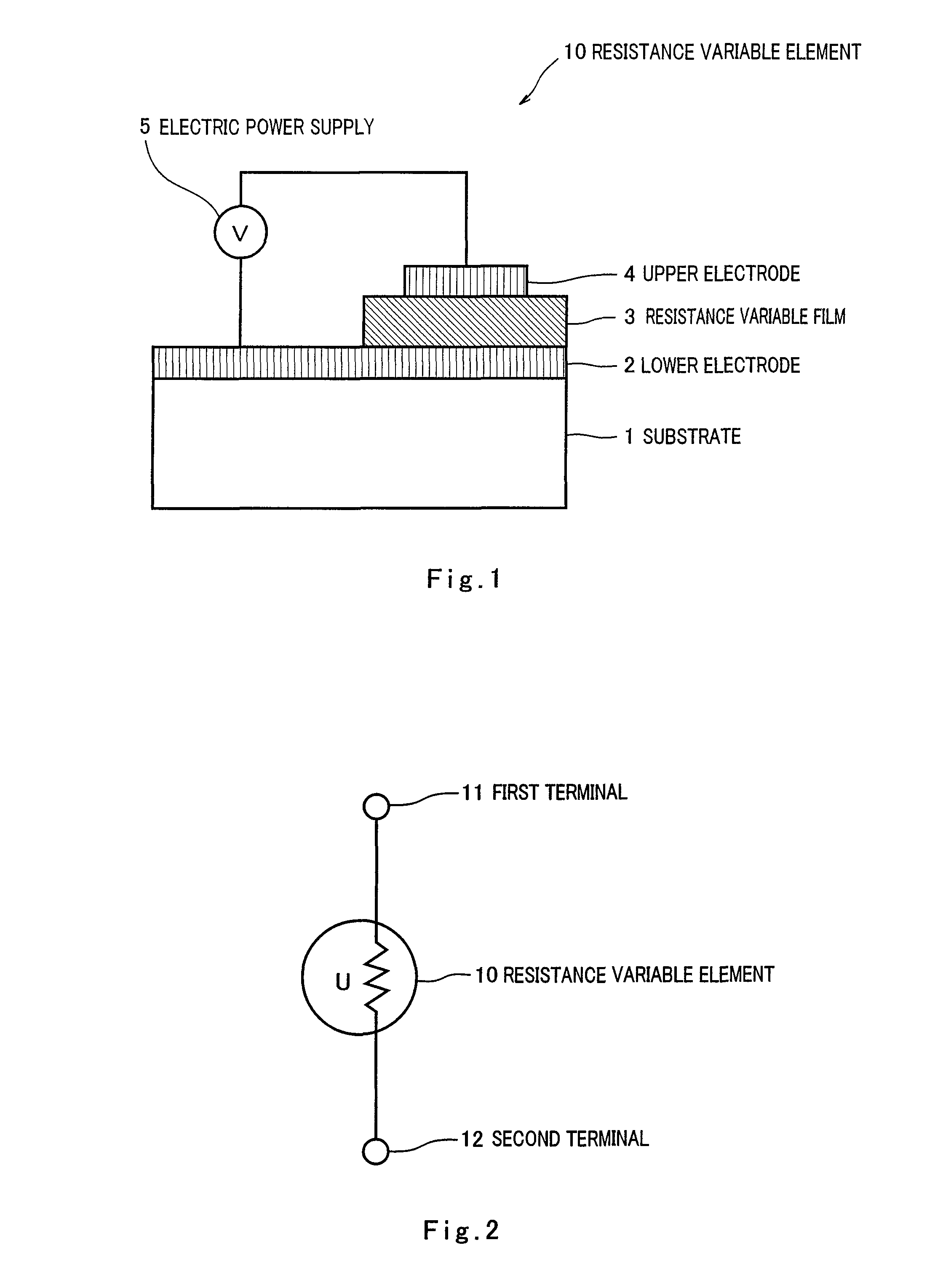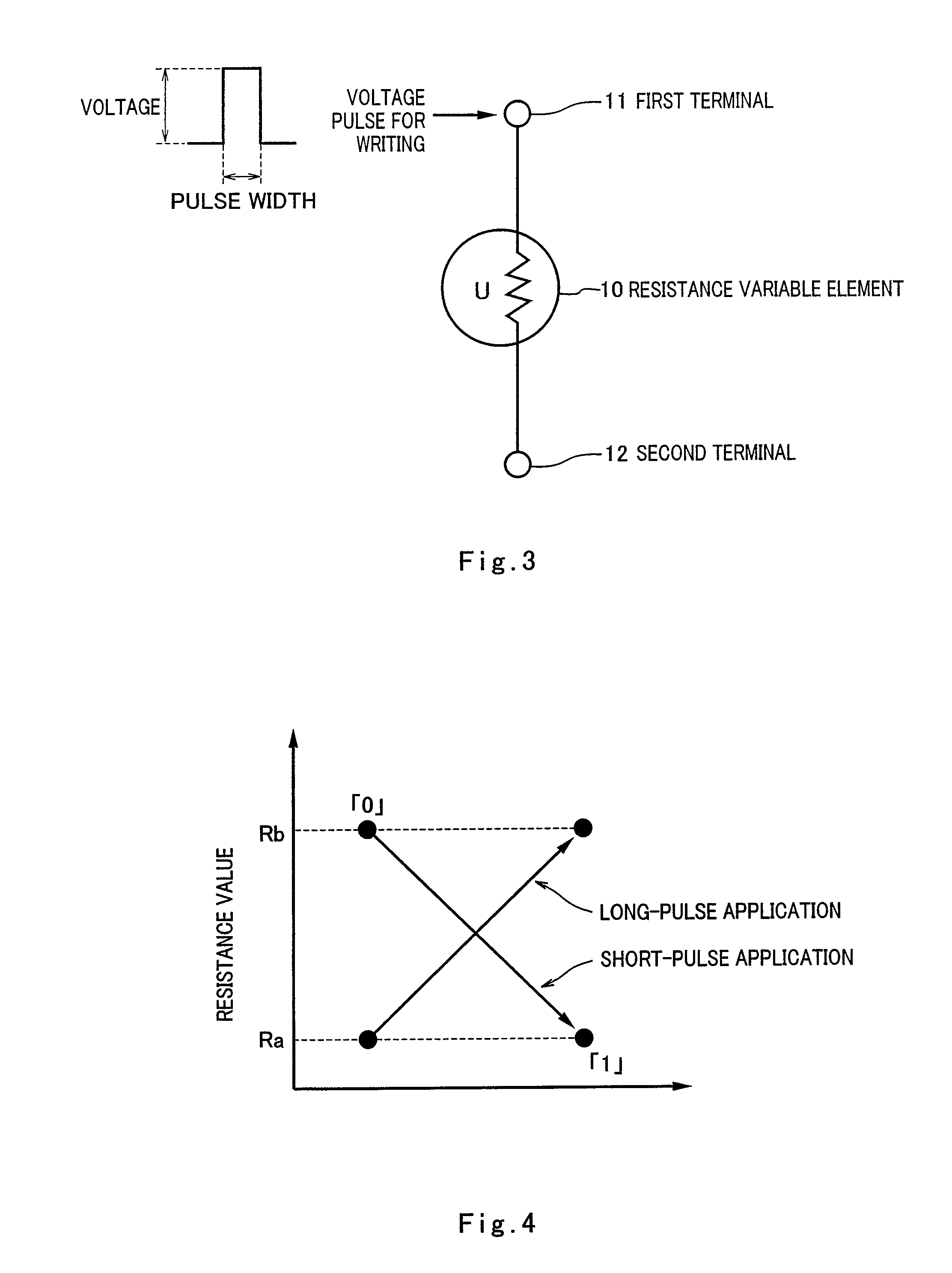Resistance variable element, nonvolatile switching element, and resistance variable memory apparatus
a technology of resistance variable and nonvolatile switching elements, which is applied in the direction of digital storage, semiconductor devices, instruments, etc., can solve the problem of limiting the miniaturization of an existing flash memory using a floating ga
- Summary
- Abstract
- Description
- Claims
- Application Information
AI Technical Summary
Benefits of technology
Problems solved by technology
Method used
Image
Examples
embodiment 1
Configuration
[0071]FIG. 1 is a schematic view illustrating an example of a configuration of a resistance variable element according to Embodiment 1 of the present invention. As shown in FIG. 1, a resistance variable element 10 of this embodiment comprises a substrate 1, a lower electrode 2 (first electrode) formed on the substrate 1, a resistance variable layer 3 formed on the lower electrode 2, and an upper electrode 4 (second electrode) formed on the resistance variable layer 3. The lower electrode 2 and the upper electrode 4 are respectively electrically connected to the resistance variable layer 3. The upper electrode 4 may be the first electrode, while the lower electrode 2 may be the second electrode.
[0072]The substrate 1 is formed of, for example, a silicon substrate.
[0073]The lower electrode 2 and the upper electrode 4 may be made of one or plural materials selected from a group consisting of, for example, Ag (silver), Au (gold), Pt (platinum), Ir (iridium), TiN (titanium ni...
example 1
[0109]A lower electrode (size: 20 μm×20 μm) comprising Pt was formed to have a thickness of 0.2 μm on a silicon substrate by sputtering. Next, a target of Ta was prepared, oxygen was mixed into argon with a predetermined flow rate ratio, and reactive sputtering was performed, thereby forming on the lower electrode 2 the resistance variable layer 3 which is expressed by a chemical formula of TaOX and has an amorphous structure. Then, using a mask and lithography, the resistance variable layer (size: 10 μm×10 μm, area: 100 μm2) which is expressed by a chemical formula of TaOX and has an amorphous structure was formed on the lower electrode. The resistance variable layer was formed under the room temperature without particularly heating the substrate. The size of the portion where the lower electrode contacts the resistance variable layer was 10 μm×10 μm (area: 100 μm2). The thickness of the resistance variable layer was 100 nm. Further, an upper electrode (size: 2 μm×2 μm) comprising ...
example 2
[0116]In Example 2, a resistance variable element was manufactured and writing and reading out were carried out in manners similar to those in Example 1 except that different parameters were used.
[0117]To be specific, in Example 2, the flow rate ratio of the oxygen gas during the reactive sputtering was controlled so that the value of X in TaOX which forms the resistance variable layer became 1.9. The value of X was verified by the RBS (Rutherford back scattering) method. As a result of the verification, the value of X was 1.9.
[0118]The resistance variable element obtained by the above described method was connected to an electric power supply, and a short pulse (voltage: +5.0V, pulse width: 100 ns) and a long pulse (voltage: +2.5V, pulse width: 100 μs) were alternately applied. A voltage with which the electric potential of the upper electrode became higher than that of the lower electrode was a plus voltage.
[0119]The resistance value of the resistance variable element was measured...
PUM
 Login to View More
Login to View More Abstract
Description
Claims
Application Information
 Login to View More
Login to View More - R&D
- Intellectual Property
- Life Sciences
- Materials
- Tech Scout
- Unparalleled Data Quality
- Higher Quality Content
- 60% Fewer Hallucinations
Browse by: Latest US Patents, China's latest patents, Technical Efficacy Thesaurus, Application Domain, Technology Topic, Popular Technical Reports.
© 2025 PatSnap. All rights reserved.Legal|Privacy policy|Modern Slavery Act Transparency Statement|Sitemap|About US| Contact US: help@patsnap.com



